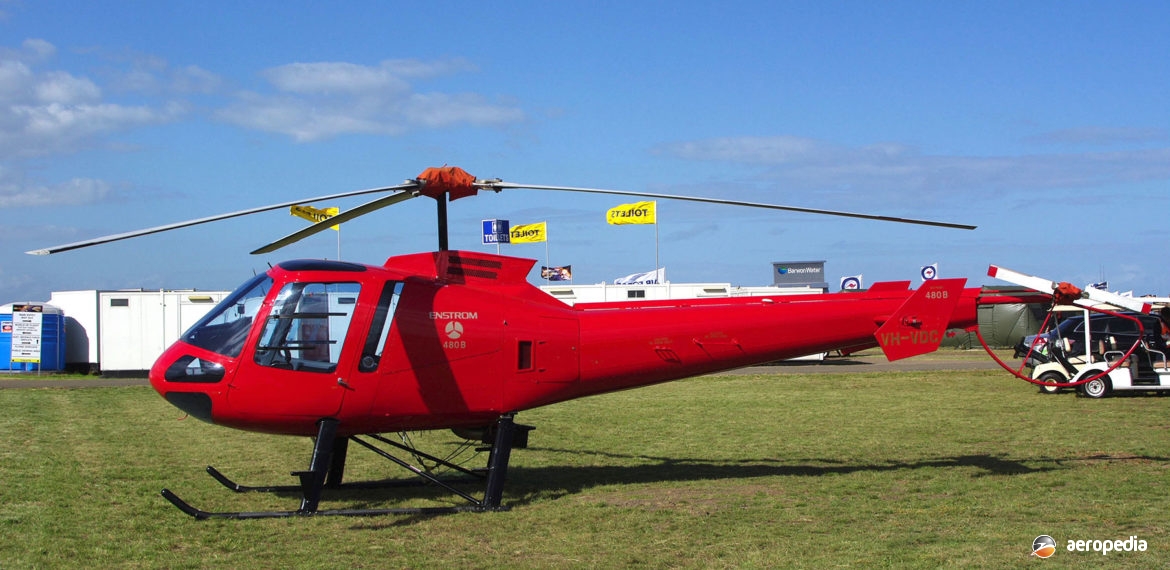Photograph:
Enstrom 480B VH-VDC (c/n 5049) at Avalon, VIC in March 2011 (David C Eyre)
Country of origin:
United States of America
Description:
Utility helicopter
Power Plant:
One 236 kw (317 shp) Rolls Royce / Allison 250-C20W turboshaft.
Specifications:
- Main rotor diameter: 9.75 m (32 ft)
- Tail rotor diameter: 1.54 m (5 ft)
- Main rotor disc area: 74.7 m²
- Fuselage length: 9.09 m (29 ft 10 in)
- Height: 3 m (9 ft 9 in)
- Max fuselage width: 1.79 m (5 ft 9 in)
- Never exceed speed: 232 km/h (144 mph)
- Max cruising speed at 914 m (3,000 ft): 213 km/h (132 mph)
- Economical cruising speed: 202 km/h (126 mph)
- Service ceiling: 3,962 m (13,000 ft)
- Max rate of climb at sea level: 488 m/min (1,600 ft/min)
- Hovering ceiling in ground effect: 4,755 m (15,600 ft)
- Hovering ceiling out of ground effect: 1,645 m (5,400 ft)
- Fuel capacity: 341 litres (75 Imp gals)
- Max range at 912 m (3,000 ft) with reserve: 685 km (426 miles)
- Endurance: 4.5 hours
- Empty weight: 769 kg (1,695 lb)
- Useful load: 592 kg (1,305 lb)
- Loaded weight: 1,361 kg (3,000 lb)
History:
The Enstrom Model 480 was developed to increase mission flexibility and to provide a more affordable light turbine-powered helicopter to place on the market which for years was dominated by the Bell 206 and the Hughes 500. In 1988 a prototype of a new model was produced by the Enstrom Helicopter Corporation, this being a proof of concept variant of the Model 280FX test bed fitted with an Allison 250 turboshaft. This became the Model 480 which seated five; and a training variant seating three was subsequently produced as the TH-28. Certification was received in June 1993.
After a development program, which included three test aircraft and over 1,500 hours of flight verification, FAR 27 standard certification was received from the US Federal Aviation Administration (FAA). The type has since been certified in 13 countries and has been operated around the world. Available as the Model 480B it has been used in a number of applications, including personal transport, flight instruction, law enforcement, power-line patrol, executive transport, electronic news gathering, pipeline patrol, aerial photography, sightseeing, and cargo / passenger delivery. Baggage capacity was 780 kg (154 lb) in the tail boom and 22 kg (48 lb) behind the cabin.
Engine was the Allison 250-C20W later manufactured by Rolls Royce, this being rated at 313 kw (420 shp) but de-rated to 228 kw (305 shp) for five minutes in the Model 480 by the transmission, which had a maximum continuous power rating of 207 kw (277 shp).
Some 50 examples had been delivered by late 2000 and a number were obtained by the Civil Aviation Training Centre in Thailand.

